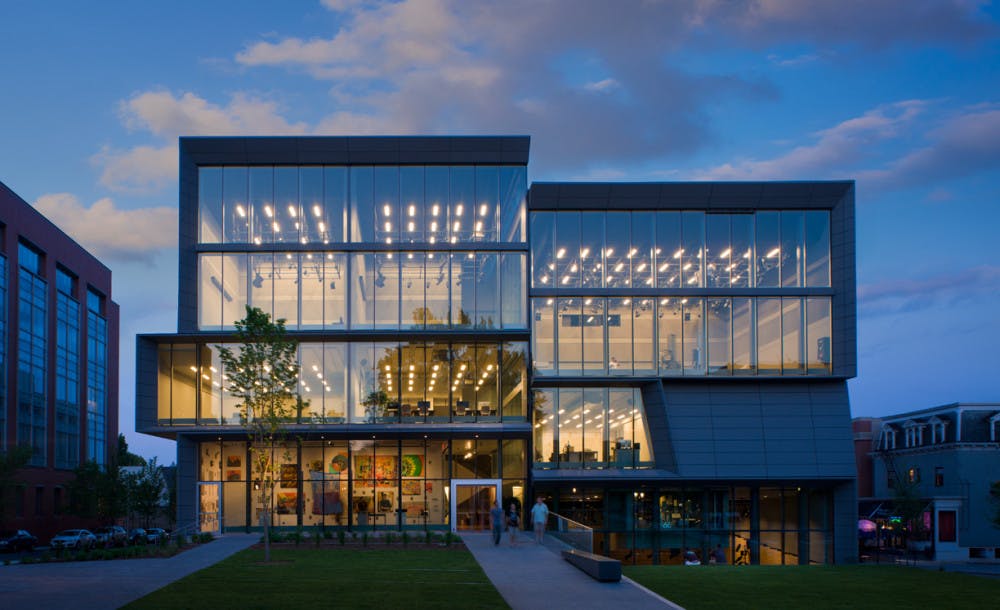On a Tuesday afternoon in the Cohen Gallery, composer Eric Nathan, assistant professor of music in composition-theory, and landscape architect Loretta Gargan stand in a nearly empty room. The walls are painted white and light funnels in through a large window facing the garden in front of the Granoff Center for the Creative Arts. In the middle of the room is a series of five simple white pews. Gargan and Nathan are waiting for a delivery of thyme.
This month, the gallery will provide a daily meditative refuge, Nathan said. The artists will offer film, music, lighting, pews and burning thyme to create an environment unlike any other on campus.
The pews are the beginning elements of what artist Catherine Wagner describes as a “site-specific immersive multisensory experience.” “Lumen,” a collaboration between Wagner, Nathan, Gargan and architect Thomas Kelley, will be in the Cohen Gallery from Oct. 5 to Nov. 5. The exhibit will incorporate elements of music, film, architecture and nature to transform the gallery into a space for visitors to meditate and reflect. The project has been shown twice before, in a Cryptoporticus at the American Academy in Rome in 2014 and the Yellow Barn Festival in Vermont in 2015.
When Wagner and Gargan traveled around Italy during their residency at the American Academy in Rome, Gargan said they found themselves “overcome by the magnitude of it all.” Inspired by the experience, as well as Pope Francis’ “Lumen Fidei” and early sermons — in which he considered the possibility of new beginnings — Wagner and Gargan began to form a plan for an artistic response. They wanted to create a secular space that evoked a message of hope. As their project took shape, they began to work with Kelley and Nathan, fellow Rome prize recipients, on what would become “Lumen.”
The experience of living in Rome sparked the echoes of religion that play a role in the space, Gargan said. “We have been inspired ... (by) old places,” Nathan said. Although Nathan does not practice Catholicism, he wonders how people can approach these seemingly historical spaces in a contemporary setting.
Working together on the project meant each artist could use their area of expertise as part of the larger vision. Although each artist came from a unique background, most of the conversations incorporated all of their voices, Wagner said. The artists realized that their collaboration did not mean splitting up the work. In places where they did feel constraints, they found a space for creative exploration, Nathan said. He adjusted his composition to match the cadence of the film, finding a fruitful challenge in working with the other artists.
In coming to Granoff, “Lumen” has moved from an underground, church-like space in Rome to a contemporary gallery. There are adjustments being made as the work is reformatted to fit its new environment, while maintaining the powerful aspects that attracted hundreds of visitors in Rome.
In a past exhibition, a visitor expressed a desire for “Lumen” to be at his funeral.
“I recommend people to approach this and experience it in any way they choose,” Nathan said.





